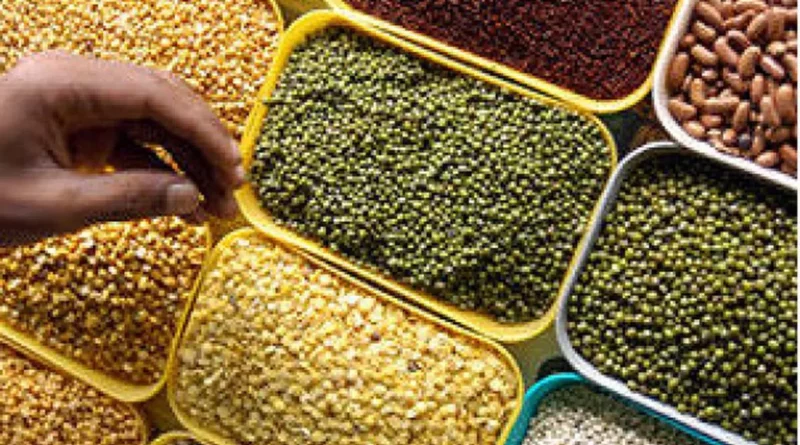India’s pulse self-reliance dream fades amid rising imports and low yields
By Dhirendra Kumar
Despite record sowing of pulses during the kharif season, India’s goal of becoming self-reliant in pulses by 2027 seems increasingly out of reach, experts said.
The yield isn’t enough to keep up with demand, even as fears mount that excessive rainfall in September could damage planted crops and impact production estimates for pulses, said Bimal Kothari, chairman of the India Pulses and Grains Association (IPGA).
Although El Niño has ended, the La Niña effect, which refers to the cooling of the central Pacific Ocean, is expected to firmly establish itself in September, according to the India Meteorological Department (IMD).
The national forecaster has predicted an unusually rainy September, particularly in northern India.
Pulses yield in India is about one tonne per hectare, compared with four tonnes per hectare in Canada, a major importing nation for masur, Kothari added.
Pulses imports rise
According to the consumer affairs ministry, pulses imports have increased significantly in recent years, up 44% in 2023 to 2.99 million tonnes (mt). Imports until July this year stood at 201,908 mt.
The government has set a target to end its reliance on imported pulses by 2027, emphasized by finance minister Nirmala Sitharaman in her Union budget. “To achieve self-sufficiency in pulses and oilseeds, we will enhance their production, storage, and marketing,” she said.
India imports tur from Mozambique, Tanzania, Malawi and Myanmar; Urad from Myanmar and Brazil; and masur from Canada, Australia, Russia and Turkey.
“Excessive rainfall is not good for standing crops. If the rains meet the predictions of the IMD, it will certainly impact the yield of pulses,” said Siraj Hussain, former agriculture secretary.
According to the Directorate of Pulses Development, the major kharif pulses-growing states are Rajasthan with a 20% production share, followed by Maharashtra (18%), Madhya Pradesh (16%), and Karnataka (15%). Uttar Pradesh produces 7% of India’s total kharif pulses, followed by Gujarat (5%), Jharkhand (5%), and Telangana (4%).
Increasing pulses requirement
“India will require 40 million tonnes of pulses by 2030 due to the increasing population, but our production has not kept pace and dropped to 24 million tonnes last year. The government needs to take corrective measures, such as encouraging crop diversification from rainfed to irrigated areas and extending subsidies to pulse farmers,” Kothari said.
The total annual consumption of pulses in India is estimated to be around 22 to 25 million tonnes. This high level of consumption reflects the cultural and dietary importance of pulses in Indian cuisine, where they are used in a variety of dishes such as dal, sambar, and curries.
Disagreeing with other experts, K.G. Ramesh, former DG of IMD, said, “There will be no impact of September rains on pulses. Production will surpass last year’s figures, and we can expect a good harvest this time.”
The government’s move to procure all pulses at Minimum Support Price (MSP) is encouraging farmers and is reflected in the sowing trends. This year, the sowing of pulses has increased by 8.47%, reaching 12.51 million hectares compared to 11.66 million hectares last year, he said.
Rise in sowing
As of August 30, the sowing of tur has increased by 5% to 4.5 million hectares, up from 4 million hectares last year. The sowing of moong has risen by 4% to 3.4 million hectares, compared to 3 mqillion hectares last year.
However, the sowing of monsoon urad has decreased by 2% to 2,9 million hectares, from 3.1 million hectares last year.
Queries emailed to the ministries of agriculture and consumer affairs remained unanswered till press time.
This article has been republished from The Livemint.

